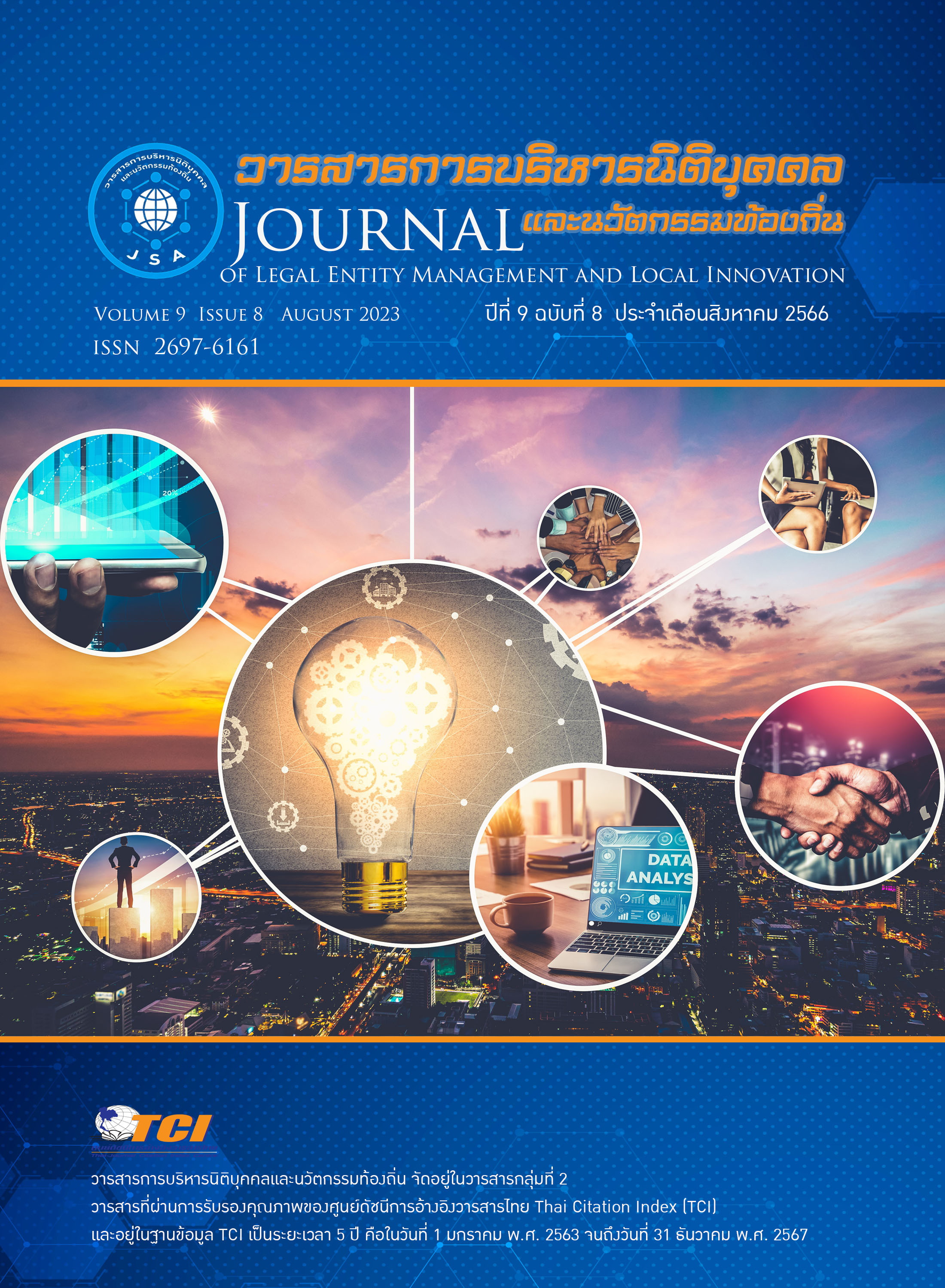การวิเคราะห์องค์ประกอบภาวะผู้นำเชิงกลยุทธ์ของผู้บริหารสถานศึกษา ในศตวรรษที่ 21 สังกัดสำนักงานเขตพื้นที่การศึกษามัธยมศึกษากำแพงเพชร
คำสำคัญ:
การวิเคราะห์องค์ประกอบ, ภาวะผู้นำเชิงกลยุทธ์, ผู้บริหารสถานศึกษาในศตวรรษที่ 21บทคัดย่อ
การวิจัยครั้งนี้มีวัตถุประสงค์ 1) เพื่อศึกษาระดับความคิดเห็นต่อองค์ประกอบของภาวะผู้นำเชิงกลยุทธ์ของผู้บริหารสถานศึกษาในศตวรรษที่ 21 และ 2) เพื่อวิเคราะห์องค์ประกอบภาวะผู้นำเชิงกลยุทธ์ของผู้บริหารสถานศึกษาในศตวรรษที่ 21 สังกัดสำนักงานเขตพื้นที่การศึกษามัธยมศึกษากำแพงเพชร กลุ่มตัวอย่างที่ใช้ในการวิจัยครั้งนี้ คือ ผู้บริหารสถานศึกษา และข้าราชการครู สังกัดสำนักงานเขตพื้นที่การศึกษามัธยมศึกษากำแพงเพชร จำนวน 330 คน เครื่องมือที่ใช้ในการวิจัย คือ แบบสอบถามองค์ประกอบภาวะผู้นำเชิงกลยุทธ์ของผู้บริหารสถานศึกษาในศตวรรษที่ 21 ของผู้บริหารสถานศึกษาแบบมาตราส่วนประมาณค่า 5 ระดับ สถิติที่ใช้ในการวิเคราะห์ข้อมูล ได้แก่ การวิเคราะห์องค์ประกอบเชิงสำรวจ และค่าสถิติพื้นฐาน ได้แก่ ค่าเฉลี่ย ( ) และส่วนเบี่ยงเบนมาตรฐาน (S.D.) ผลการวิจัยพบว่า
1) ระดับความคิดเห็นของภาวะผู้นำเชิงกลยุทธ์ของผู้บริหารสถานศึกษาในศตวรรษที่ 21 พบว่า ภาพรวมอยู่ในระดับมาก เมื่อพิจารณาเป็นรายองค์ประกอบพบว่า องค์ประกอบที่มีระดับความคิดเห็นมากที่สุด คือ องค์ประกอบที่ 1 ด้านการวางแผนเชิงกลยุทธ์ และคุณธรรมจริยธรรม มีค่าเฉลี่ย ( = 4.27) และส่วนเบี่ยงเบนมาตรฐาน (S.D.=.01) และองค์ประกอบที่มีระดับความคิดเห็นน้อยที่สุด คือ องค์ประกอบที่ 3 ด้านการส่งเสริมวัฒนธรรมองค์กรแบบมีส่วนร่วม มีค่าเฉลี่ย ( = 4.12) และส่วนเบี่ยงเบนมาตรฐาน (S.D.= .01) 2) องค์ประกอบของภาวะผู้นำเชิงกลยุทธ์ของผู้บริหารสถานศึกษาในศตวรรษที่ 21 ประกอบด้วย 5 องค์ประกอบ ได้แก่ องค์ประกอบที่ 1 ด้านการวางแผนเชิงกลยุทธ์ และคุณธรรมจริยธรรม มีค่าน้ำหนักขององค์ประกอบอยู่ระหว่าง .839-.962 องค์ประกอบที่ 2 ด้านความคิดริเริ่มสร้างสรรค์ มีค่าน้ำหนักขององค์ประกอบอยู่ระหว่าง .721-.856 องค์ประกอบที่ 3 ด้านการส่งเสริมวัฒนธรรมองค์กรแบบมีส่วนร่วม มีค่าน้ำหนักขององค์ประกอบอยู่ระหว่าง .900-.943 องค์ประกอบที่ 4 ด้านการบริหารทรัพยากรภายในองค์กร มีค่าน้ำหนักของประกอบอยู่ระหว่าง .621-.760 และองค์ประกอบที่ 5 ด้านการมีวิสัยทัศน์ร่วม มีค่าน้ำหนักขององค์ประกอบอยู่ระหว่าง .812-.882 ทั้ง 5 องค์ประกอบสามารถอธิบายความแปรปรวนทั้งหมดได้ร้อยละ 74.934


